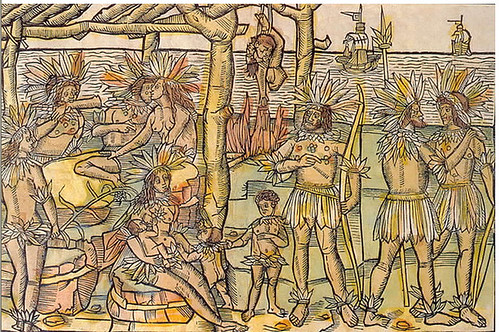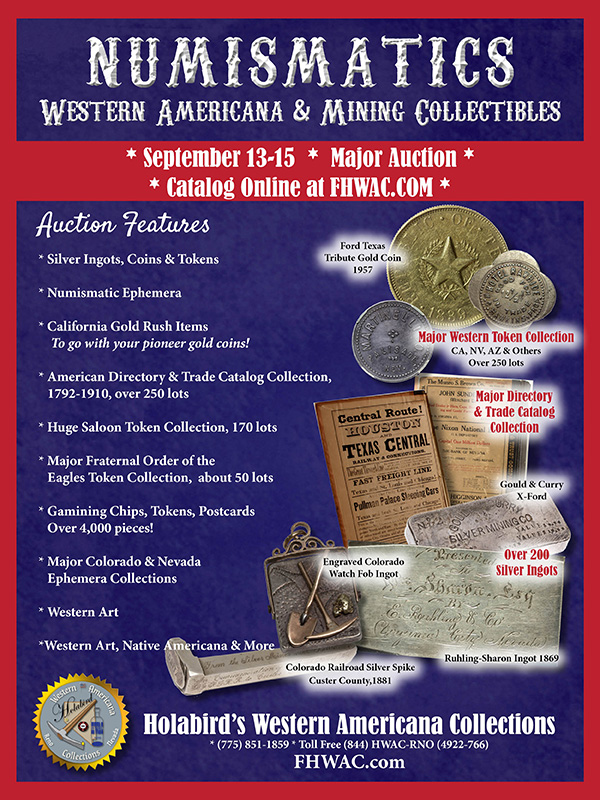
PREV ARTICLE
NEXT ARTICLE
FULL ISSUE
PREV FULL ISSUE
RESEARCHERS UPDATING BETTS ON AMERICAN COLONIAL MEDALS
Tony Lopez and Skyler Liechty are working on an update to the classic work by Betts on medals depicting colonial American history. Tony forwarded this teaser for E-Sylum readers, along with a request for assistance with a census of known early examples. Thanks!
-Editor
We have spent the last six years working on an update and revision of Betts' American Colonial History Illustrated by Contemporary Medals, focusing on the early Betts medals issued prior to 1648. The most challenging part of our research has been seeking out medals missed by Betts and others.

The Metropolitan Museum of Art, Rogers Fund, 1960, www.metmuseum.org As a teaser of what is forthcoming, we decided to share one of our exciting discoveries with E-Sylum readers. The picture is of a large (175mm) and beautifully graphic gilt and lead medallion entitled “The Personification of America”. The medal is undated, but for the reasons that follow, we believe the medal is of German origin, and that based upon the medals elements matching the very earliest depictions of the New World, it can credibly be dated to the mid 1520’s or earlier – four decades before the first Betts medal which Betts dates to 1556! More significant is that this medal was created within a generation of Columbus’ arrival in the New World, and reflects the earliest European impressions of the Americas. The medal’s design features the central figure of a Native Warrior Queen or Princess seen from behind, longbow in her right hand, staff in her left hand, pointing west. (Matching precisely the clothing style and long bows seen in a hand-colored woodcut from the 1505 Augsburg Edition of Amerigo Vespucci’s pamphlet Mundus Novus, depicting the cannibalism of the Tupinambas tribe of coastal Brazil; the very earliest known depiction of a Native American wearing a feathered headdress is seen on a Vatican fresco painted in 1494 by Pinturicchio).

Cannibalism in the New World Surrounding her are the riches of the New World, a treasure chest filled with silver or gold coins, a silver platter, a silver vase or pitcher, and the agricultural bounty of the Americas, maize (corn), tobacco plants, coconuts, and other plants which are possibly sweet potatoes, and coffee or cocoa beans. Most interesting is that she is surrounded by the mysterious creatures of the South American jungle; a Macaw, two monkeys, a snake, a beastly creature seen on the left, and an armored rhinoceros on the right. These last two mysterious and curious creatures on the medal help date it. The beastly creature on the left is actually an opossum, matching the image of an opossum seen on the cartouche of the 1513 Tabula Terre Nove (Admiral's Map) by Martin Waldseemüller.

Why a rhinoceros? We know today that a Rhinoceros is native to Africa and India, but within a few decades of Columbus’ landing, the Americas were seen as a mysterious place with amazing creatures, and the little known rhinoceros was also mysterious at that time, and could have easily been seen as coming from America. The Rhinoceros depicted on the medal - with armor plating and a second horn between its shoulders - is known as the Dürer Rhinoceros, from a well-known 1515 woodcut done by Albrcht Dürer, who also designed the 1521 Nuremburg medal of Charles V.

Durer's Rhino While the Metropolitan Museum of Art in New York City dates this medal to the late 16th century (specifically 1580-1590) with this imagery seen on the medal contemporaneous to the late 1510’s we believe the medal is much earlier; as early as the late 1510’s and likely the mid 1520’s, allowing time for all of this imagery to come together in one piece. The medal is one of four with an allegorical narrative depicting the “four parts of the world”- the four then-known continents (including Europe, Asia and Africa – and curiously enough the Africa medal does not include a Rhinoceros!). Sadly, this beautiful medal is exceedingly rare, and to our knowledge unique - we know of only one example of this medal, currently in the collection of the Met. Another teaser - this early medal is still not the earliest medal we have discovered that should have been included in Betts. We are currently working on rarity estimates for the medals, so would like to reach out to E-Sylum readers to seek their assistance in compiling a census of these early medals. If any of the Betts medals from Betts-1 (Charles V/PhillipII Novi Orbis) through Betts-38 (Dutch Victory at Pariba) are included in their collections, we ask that they contact us and provide us with the information about their holdings and any provenance so we can document the rarity of these medals for our Betts reference. Of course all information will be kept strictly confidential. We also ask that readers let us know of any medals prior to 1648 pertaining to the New World which they believe should have been listed in Betts, and have not been catalogued in Betts, Van Loon, Pax in Nummis, and do not pertain to the treaties listed in Davenport, known as Davenport medals. We can be contacted at tonyjlopez@comcast.net or skyler.liechty@gmail.com.
So, can anyone help? This is a big project, and assistance is needed to scour the globe for examples of these important early medals.
-Editor

Wayne Homren, Editor The Numismatic Bibliomania Society is a non-profit organization promoting numismatic literature. See our web site at coinbooks.org. To submit items for publication in The E-Sylum, write to the Editor at this address: whomren@gmail.com To subscribe go to: https://my.binhost.com/lists/listinfo/esylum All Rights Reserved. NBS Home Page Contact the NBS webmaster 
|